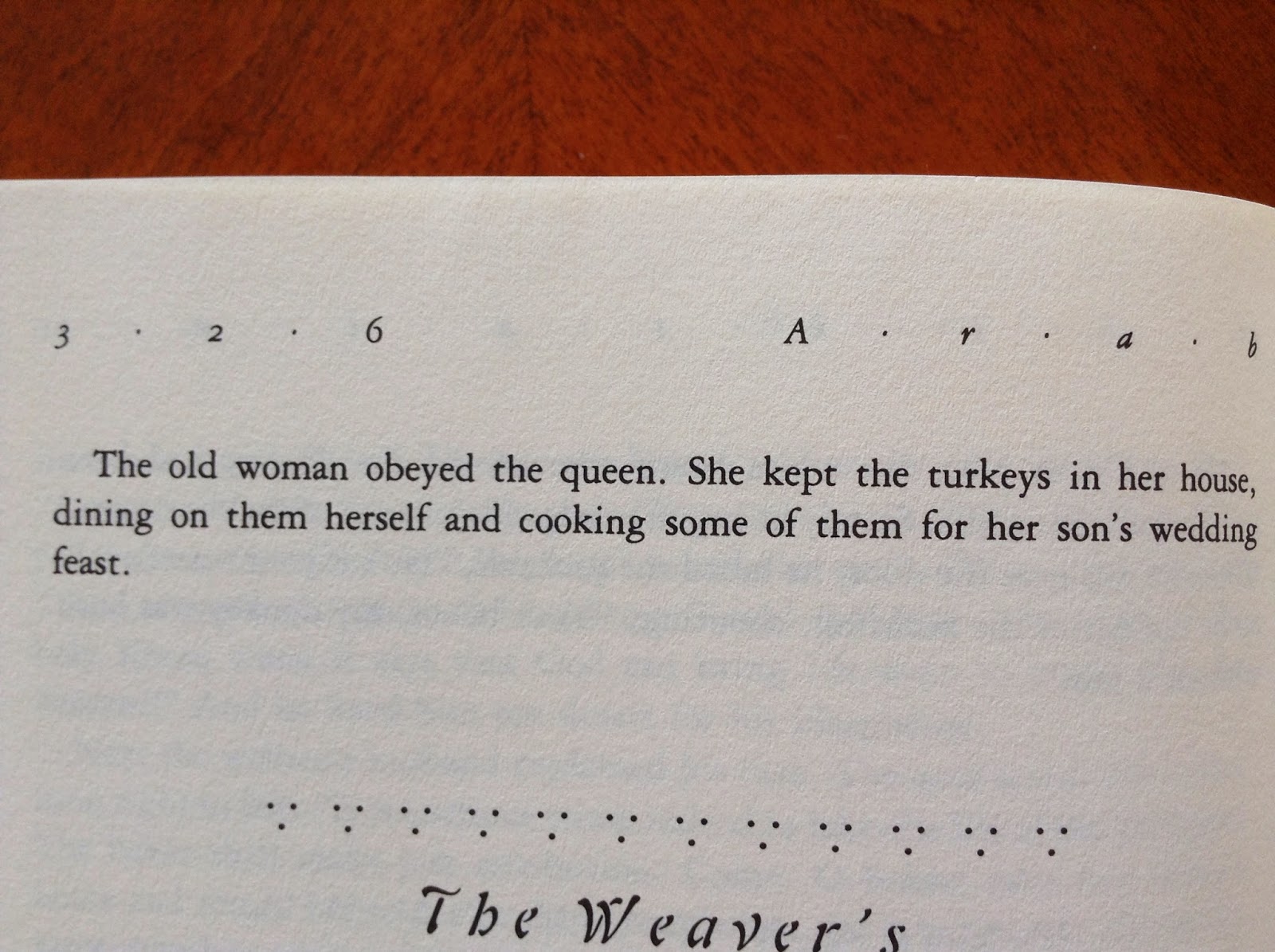As previously
mentioned in my blog post "Food Peace", cooking large meals and
engaging in communal dinners is encouraged within the Middle East. In the older
Middle Eastern traditions, particularly in the Bedouin practices, eating around
a table or on the floor in a large circle with extended family or members of an
entire tribe was common. Accompanying these fire-lit feasts would be folktales
providing entertainment and moral guidance. Through an oral history, compiled
into Inea Bushnaq's Arab Folktales, society witnesses the use that food
had in providing moralistic instruction through quirky anecdotes. "The
Talking Turkeys" provides an interesting insight into the social
structures of the past that in fact remain today, making the folktale relevant
in modern times.
 |
| Please click on the pictures to read the text |
The type of food being eaten distinguishes the rich from the poor. Being able to have meat implies wealth. A meat such as Turkey is often an intended centre piece on the dinner table; it entails a sense of grandeur. Being able to have turkey for dinner already acts as a status symbol within the tale, but having hundreds surpasses simply conveying an upper class identity and instead expresses excess and gluttony. It is implied that the old woman is of no status in her namelessness and opportunistic demeanour.
Being of a royal family exceeds simply being upper class; they are the pinnacle of the upper class. So, the queen and her family come to represent the figures of a great class divide and injustice, contrasting her abundance of turkeys with the old woman’s lack of anything at all, besides her wit.
Although comedic in its absurdity, the folktale highlights the sad reality that the old woman needed not only to provide for her family, but wanted to provide a social ceremony so her son did not have to experience the social trauma of having a feast-less wedding. “What is eaten, who prepares the food, who gets whom to eat what, who insists everything is eaten up, is a matter of material and social relations, integrally located in a hierarchical social structure, where power wealth and freedom of choice are unevenly distributed” (Cline, 145). The folktale exhibits the endurance that the implied peasant has when it comes to providing for her family. Not only is her quest about feeding her family for survival's sake, but also there is a need to partake in ceremonious activities centred on food. Although she is described as "sly", her behaviour not only comments on the class systems that leave her at a disadvantage, but also the human need to have a social event marked by a feast, which provides her with some sort of validation as a mother and as a person.

No comments:
Post a Comment